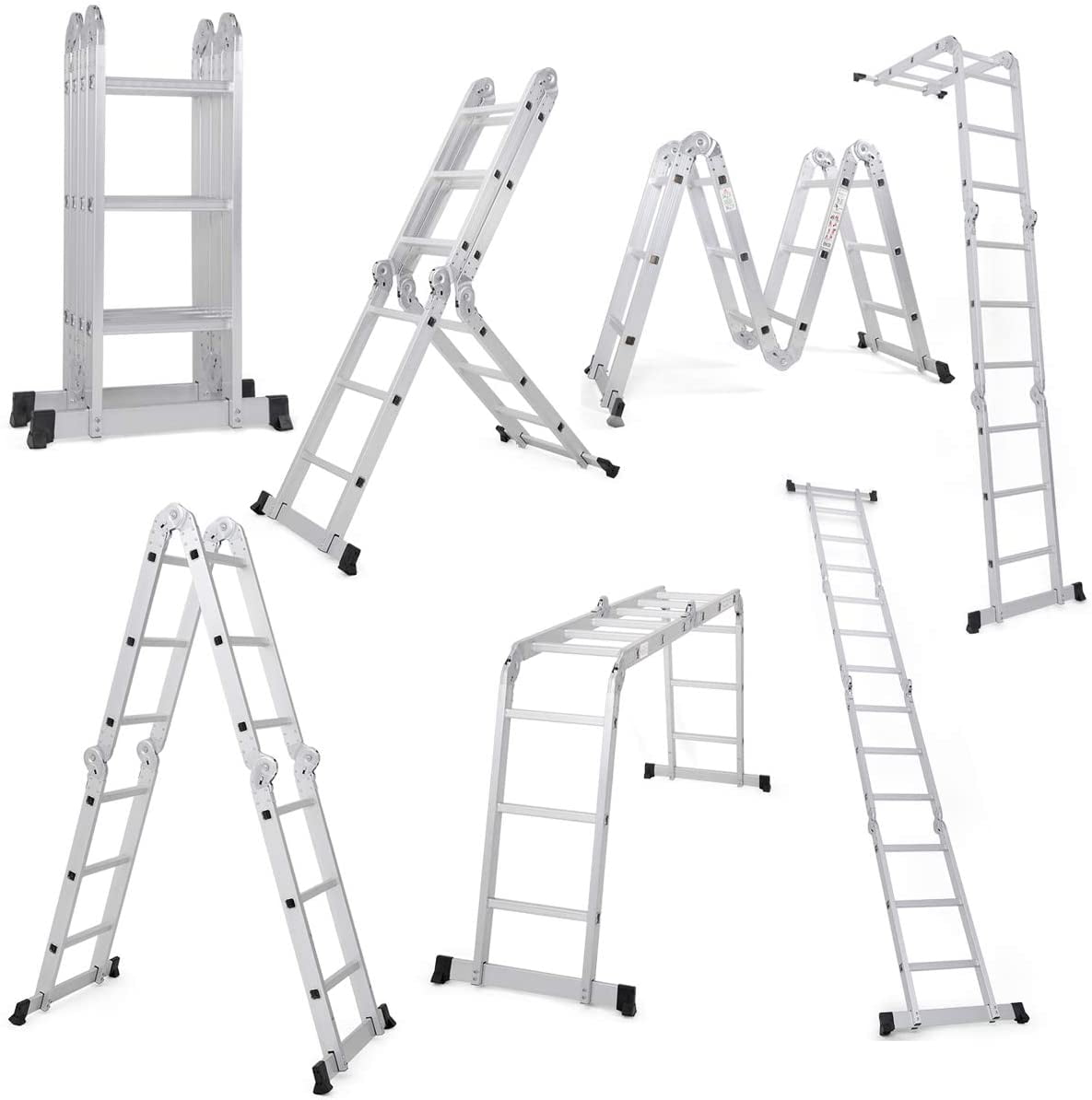Purple Frog said:
Simple hack. Most commercial made ladders have rungs that are flat on top. If that flat is level, the ladder is usually correct.
As long as nobody removed the sticker, many ladders also have a stick with a big "L" on it at the proper angle so the lines show horizontal and vertical for proper positioning.

Like Dculberson, I too love my adjustable feet stabilizers. Best modification I ever made to a ladder.
There are various types of upper stabilizers, and it's worthwhile to shop and ponder them for your use.
I've two aluminum Werner extension ladders, a 24' rated at 225 and a 32' rated at 250.
That length, and the weight of the material to make them comparable in load strength, make them completely different ladders to deal with.
I can easily carry and maneuver the 24' ladder. Because of that, it's my go-to ladder. I can carry it vertically, I can flip it around, etc.
The 32' ladder is almost impossible for me to handle by myself now. It's a heavy and huge monster. I can't control it well for a vertical carry any longer, and walking it down with its feet against a wall is getting ugly. So any more, unless I need to get up real high, I won't use it. And more and more these days, I'm leaning to hiring someone else to go up high for me.
I bought one of these folding ladders many years ago, and I really like it. It is heavy-duty, so it's pretty stable. It can be an a-frame ladder or a shorter straight ladder, plenty for getting up onto a single-story roof. I also use it as a workbench, a scaffold, and a support; it is very versatile. And, of course, it can fold for storage. If you can only have one ladder, this is my recommendation.

In reply to pinchvalve (Forum Supporter) :
Too bad they don't have retractable wheels for lugging it around.

SV reX
MegaDork
2/18/25 11:15 a.m.
Nocones did a pretty good job summarizing ladder safety. Let me add a couple things...
- If your ladder is wobbly or unstable, it's either worn out or too lightweight for what you are doing. THROW IT AWAY. NOW. Spend the money on a better ladder (it's not that much).
- READ the labels on your ladder! The weight rating must include your weight and what you are carrying. I don't buy anything with a weight rating less than 225 lbs. I'm 180.
- Those U shaped stabilizers have several great uses. Climbing on the roof from the ladder is NOT one of them. Your ladder must at extend at least 3' above the roofline.
- Stepladders are NOT designed to lean against a wall. We all do it, but it leaves almost no footprint for traction.
- Those labels that say "Do not stand at or above this level"... they mean it. A 6' stepladder is actually only designed to get you 3'-10" off the floor.
- That "L" label helps determine proper ladder pitch. Another trick is that you should be able to stand with your toes against the bottom of the ladder rails and easily hook your fingertips around a rung at shoulder height.
- DON'T reach out. Belt buckle between the rails. Climb down and move it- don't be lazy.
- A safety line is designed to prevent you from hitting the ground. It is not designed to prevent a fall, nor to prevent injury. It's supposed to be anchored to something that can withstand 5000 lbs of pull.
#1 rule... If you don't feel safe, you're NOT.


















